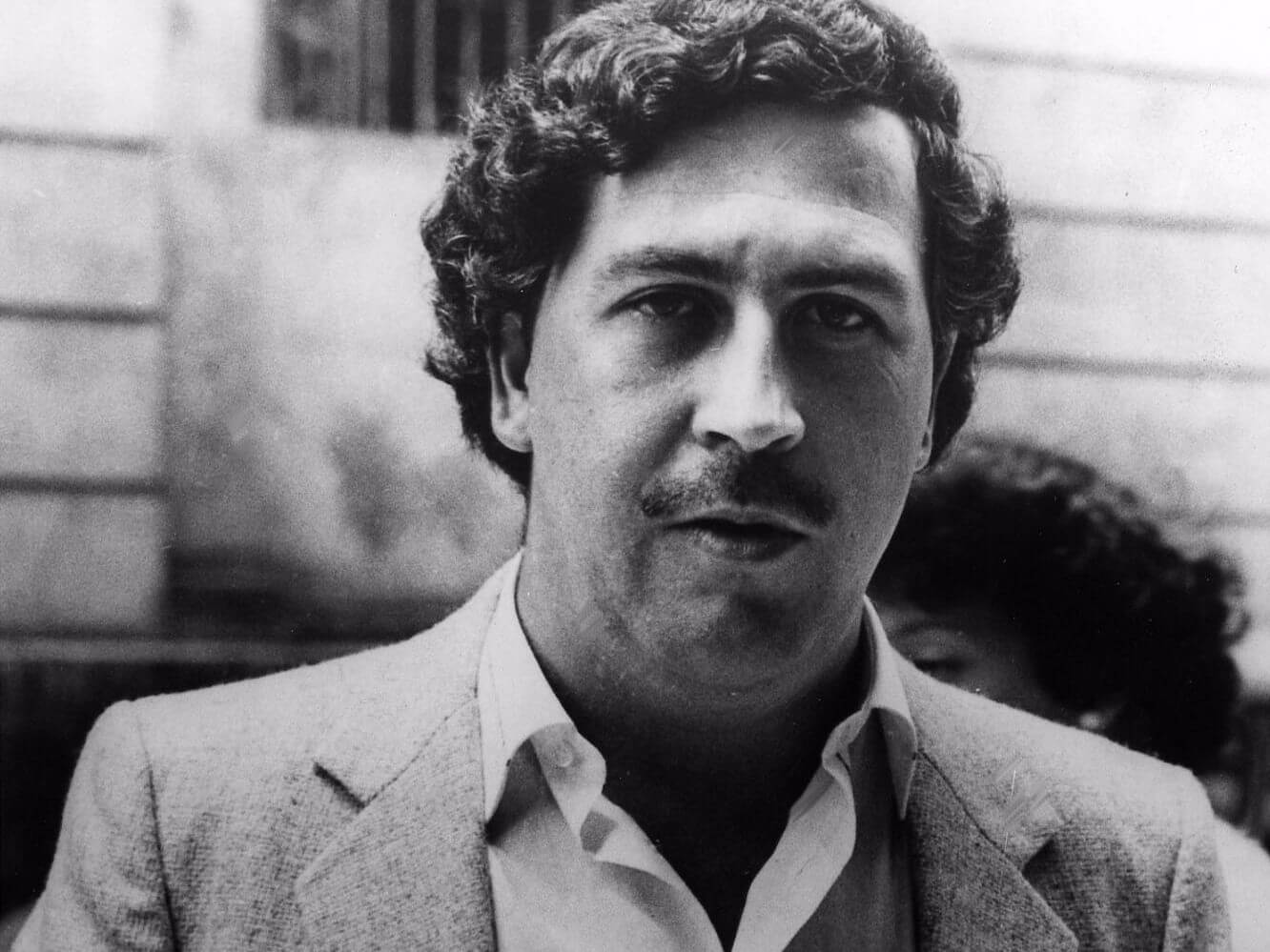Pablo Emilio Escobar Gaviria is a Colombian drug trafficker whose smuggled cocaine has provided at least eighty percent of the United States’ cocaine supply during his time. At the height of his criminal career, he had managed to gather over US$22 Billion a year as his income. Because of this, he was widely known as the ‘King of Cocaine’ and has become one of the wealthiest criminals in history and one of the richest men in the world at the prime time of his drug career.

Born in Rionegro, Colombia on December 1, 1949, Pablo Escobar grew up in Medellin, the place where his crimes had started. Right after studying briefly at Universidad Autónoma Latinoamericana of Medellín, he began engaging himself in criminal activity by selling contraband cigarettes and fake lottery tickets, stealing motor vehicles and even selling fake university diplomas. He eventually engaged himself in kidnap for ransom before starting to sell and distribute powder cocaine until he had managed to establish a safe distribution route in the United States from year 1978 to 1982.
Because of high demand for cocaine in the United States during that time, Escobar’s cocaine business and criminal influence has expanded exponentially. Because of enormous profits obtained from selling cocaine, he had started accumulating properties for himself, starting from large tracts of land up to planes, luxury ships and much more. He even purchased a 7.7 square-mile land in Antioquia for a few million dollars, the land where he had built the Hacienda Napoles. The Hacienda not only contains a luxury house but a bullring, a sculpture garden and a zoo as well as personal buildings for his family and the drug cartel. It is also during that time where it is estimated that about eighty tons of powder cocaine enters the United States in a monthly basis.
During the Mid-80s, the Medellin Cartel (Escobar’s drug cartel) had successfully distributed eleven tons of cocaine in the United States via jet plane as well as larger cargoes via hired submarines. Aside from United States, his cartel also controls the large portion of drugs that are being distributed inside Mexico, Peru, Spain, Dominican Republic and Venezuela.
In order to protect himself and his business against rivals and rebel, Escobar had started funding a paramilitary group that served as his own personal army. Doing such a thing became possible because of their government’s incompetence when dealing with armed rebels during his time. At the same time, in order to prevent criminal charges from Colombian Government as well as United States, Escobar had engaged in different non-government organization programs such as housing and livelihood development, therefore making him gather quite a lot of positive impression from the populace. Eventually, he had decided to run for a congressional seat in Colombia and was actually elected. However, Rodrigo Lara Bonilla, which is also a politician as well as a lawyer, denounced him by pointing out his relation and influence to drug-related business and crimes. Because of this, Escobar was expelled from congress and had his US visa cancelled afterwards. He then retaliated by ordering two of his men to execute Lara, who was eventually gunned down inside his car on April 30, 1984.
By his ‘Plata o Plomo’ (Silver or Lead) system, Escobar had managed to instill fear to governing authorities, starting from the police and judges in the Colombian government. The so-called system involves putting his supporters inside the government in his payroll while those who oppose him are no doubt executed by his men. He was also deemed responsible for the murder of presidential candidate Luis Carlos Galan, whose known main goal is to fight drugs once he was elected on the 1990 Colombian Presidential Election. Escobar and his men were also suspected in the1989 DAS Building bombing in Bogota, where hundreds of people died. However, one of his most notorious crimes is none other than Avianca Flight 203 bombing, leaving none of its passengers including two US citizens alive. After Galan’s assassination, the Colombian government had convinced him to surrender in exchange of reduced criminal sentence. It is also during that time where the newly-approved Colombian Constitution of 1991 had prevented the US Government’s extradition against Escobar. This had made the constitution somewhat controversial due to the suspicion that there’s a conspiracy between Escobar and the key member of the Constituent Assembly that had passed the law. He was then imprisoned inside his own luxurious private prison, La Catedral. Despite his imprisonment, the drug activities still continue, therefore making the government decide to transfer him to a more conventional jail. However, Escobar had found out the plan and managed to escape through the help of his contacts.
Because of this, the Colombian government had started to seek aid from the United States government, who answered by sending a Delta Force group along with Centra Spike, the US Army Intelligence Support Activity during that time. The Centra Spike’s Goal is to monitor all of radio communication conversations in order to find out Escobar’s whereabouts.
On December 2, 1993, Escobar was found hiding inside Los Olivos, a barrio inside Medellin. Because of trying to escape once again, he was shot by the Colombian National Police, eventually leading to his death.

